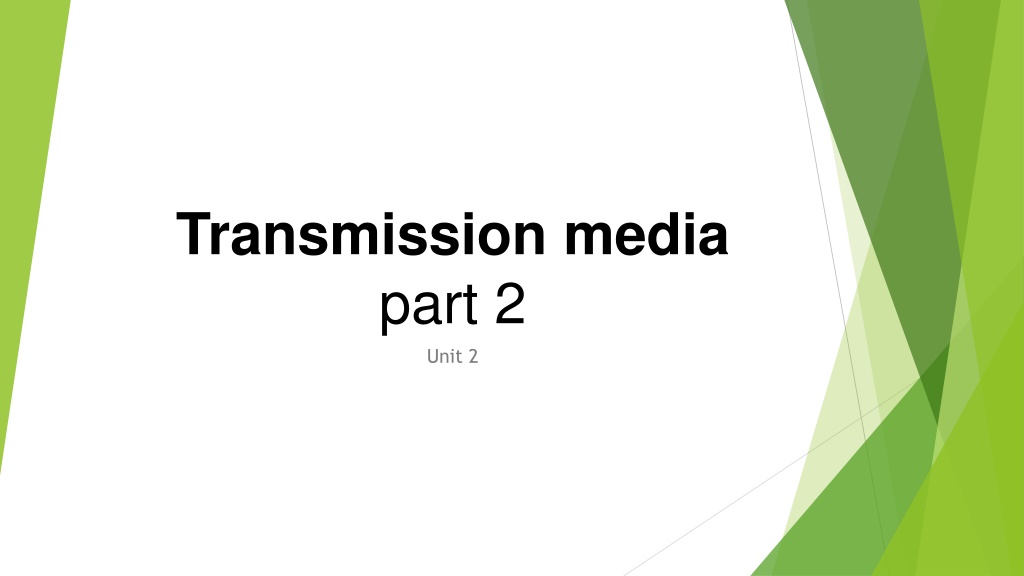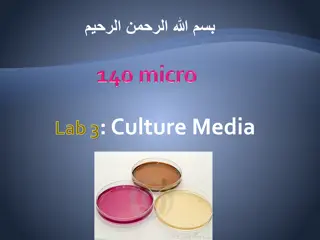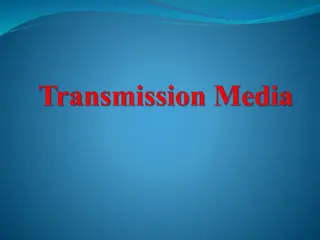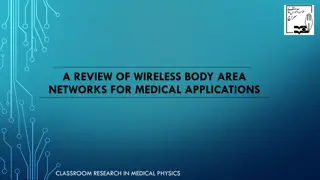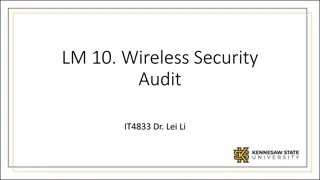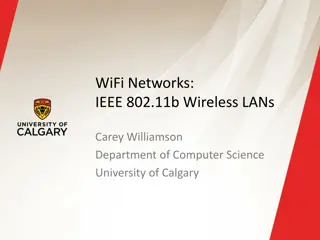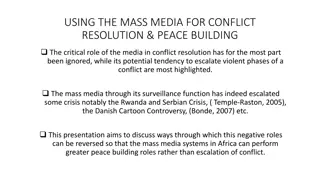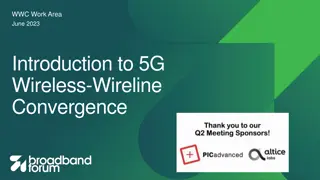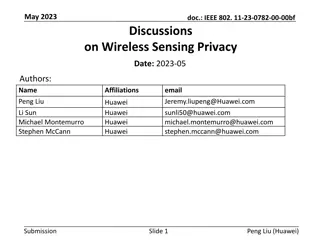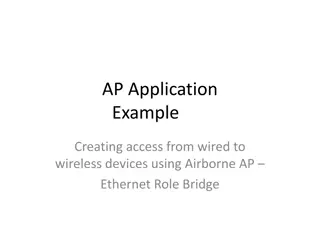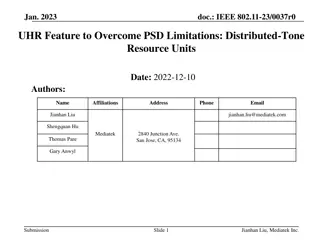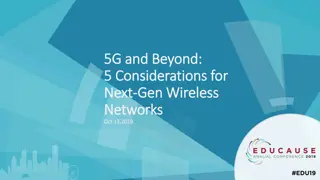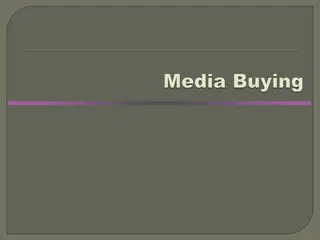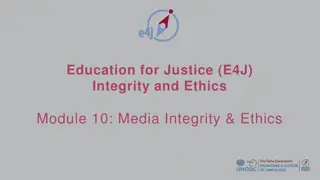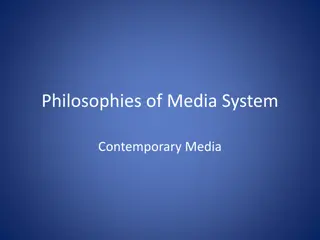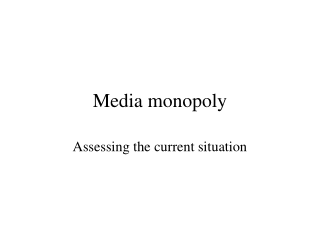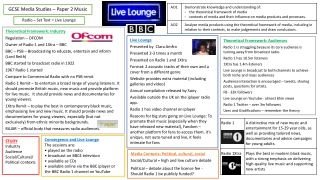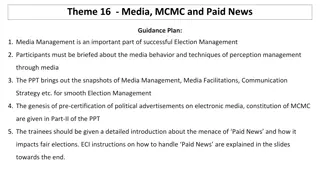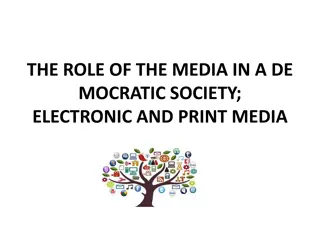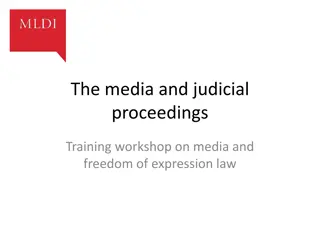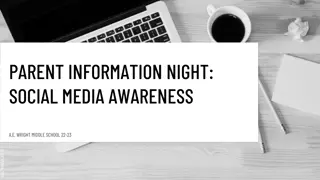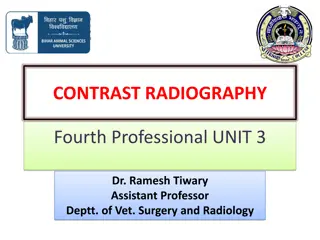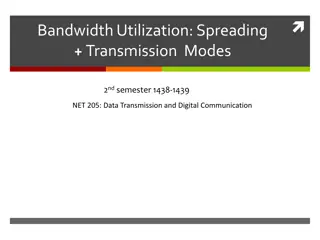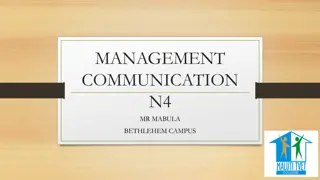Understanding Different Types of Wireless Transmission Media
Wireless transmission encompasses various forms of unguided media, including radio, microwave, and infrared waves. Each type serves unique communication purposes based on their frequency ranges, wavelengths, and propagation characteristics. Wireless signals, whether through radio waves with extensive penetration abilities or microwaves requiring line-of-sight alignment, provide versatile communication options for short and long-range applications. Infrared waves find specific use in short-range communication, such as remote controls, while laser-based optical signaling offers precise, unidirectional data transmission capabilities.
Download Presentation

Please find below an Image/Link to download the presentation.
The content on the website is provided AS IS for your information and personal use only. It may not be sold, licensed, or shared on other websites without obtaining consent from the author. Download presentation by click this link. If you encounter any issues during the download, it is possible that the publisher has removed the file from their server.
E N D
Presentation Transcript
Transmission media part 2 Unit 2
Wireless Transmission Wireless transmission is a form of unguided media. Wireless communication involves no physical link established between two or more devices, communicating wirelessly. Wireless signals are spread over in the air and are received and interpreted by appropriate antennas. When an antenna is attached to electrical circuit of a computer or wireless device, it converts the digital data into wireless signals and spread all over within its frequency range. The receptor on the other end receives these signals and converts them back to digital data. A little part of electromagnetic spectrum can be used for wireless transmission.
Radio Transmission Radio frequency is easier to generate and because of its large wavelength it can penetrate through walls and structures alike. Radio waves can have wavelength from 1mm 100,000km and have frequency ranging from 3Hz (Extremely Low Frequency) to 300 GHz (Extremely High Frequency). Radio frequencies are sub-divided into six bands. Radio waves at lower frequencies can travel through walls whereas higher RF can travel in straight line and bounce back. The power of low frequency waves decreases sharply as they cover long distance. High frequency radio waves have more power. Lower frequencies such as VLF, LF, MF bands can travel on the ground up to 1000 kilometers, over the earth s surface. Radio waves of high frequencies are prone to be absorbed by rain and other obstacles. They use Ionosphere of earth atmosphere. High frequency radio waves such as HF and VHF bands are spread upwards. When they reach Ionosphere, they are refracted back to the earth.
Microwave Transmission Electromagnetic waves above 100MHz tend to travel in a straight line and signals over them can be sent by beaming those waves towards one particular station. Because Microwaves travels in straight lines, both sender and receiver must be aligned to be strictly in line-of-sight. Microwaves can have wavelength ranging from 1mm 1meter and frequency ranging from 300MHz to 300GHz. Microwave antennas concentrate the waves making a beam of it. As shown in picture above, multiple antennas can be aligned to reach farther. Microwaves have higher frequencies and do not penetrate wall like obstacles. Microwave transmission depends highly upon the weather conditions and the frequency it is using.
Infrared Transmission Infrared wave lies in between visible light spectrum and microwaves. It has wavelength of 700nm to 1mm and frequency ranges from 300GHz to 430THz. Infrared wave is used for very short range communication purposes such as television and its remote. Infrared travels in a straight line hence it is directional by nature. Because of high frequency range, Infrared cannot cross wall-like obstacles. Light Transmission Highest most electromagnetic spectrum which can be used for data transmission is light or optical signaling. This is achieved by means of LASER. Because of frequency light uses, it tends to travel strictly in straight line. Hence the sender and receiver must be in the line- of-sight. Because laser transmission is unidirectional, at both ends of communication the laser and the photo-detector needs to be installed. Laser beam is generally 1mm wide hence it is a work of precision to align two far receptors each pointing to lasers source.
Laser works as Tx (transmitter) and photo-detectors works as Rx (receiver). Lasers cannot penetrate obstacles such as walls, rain, and thick fog. Additionally, laser beam is distorted by wind, atmosphere temperature, or variation in temperature in the path. Laser is safe for data transmission as it is very difficult to tap 1mm wide laser without interrupting the communication channel.
